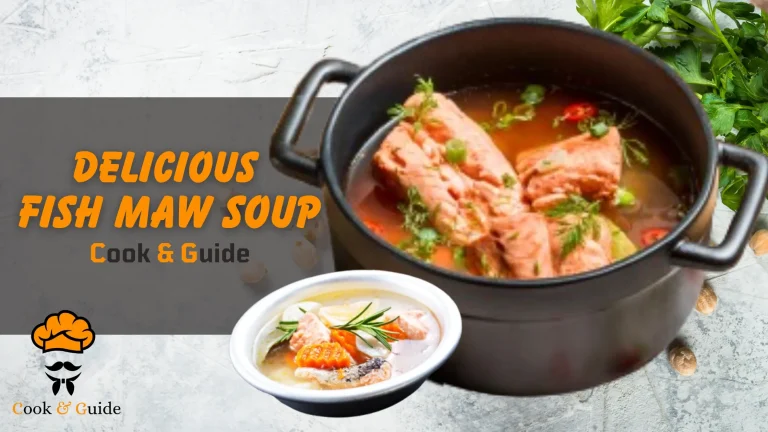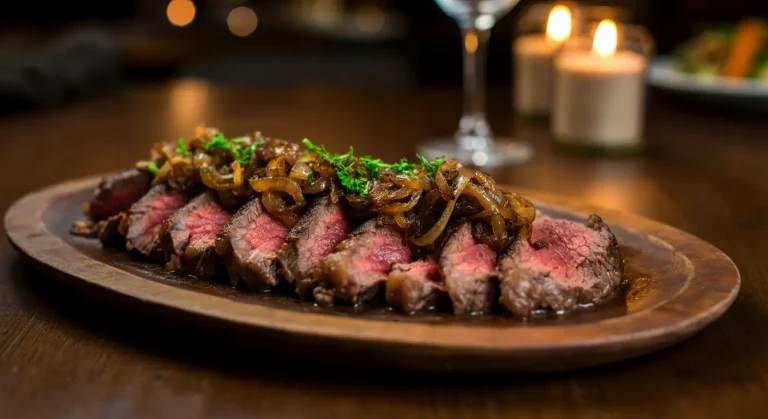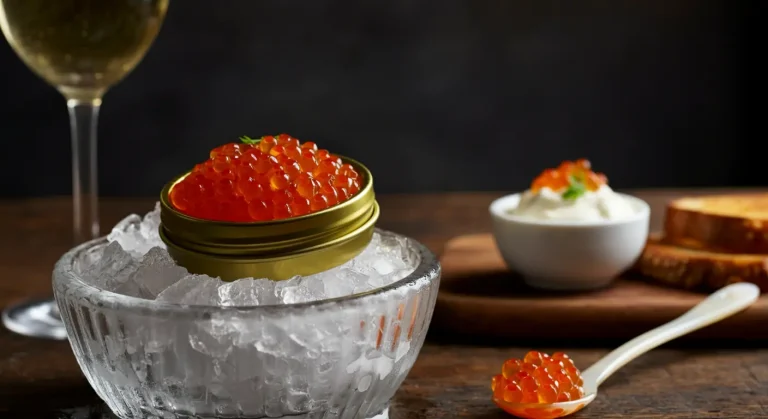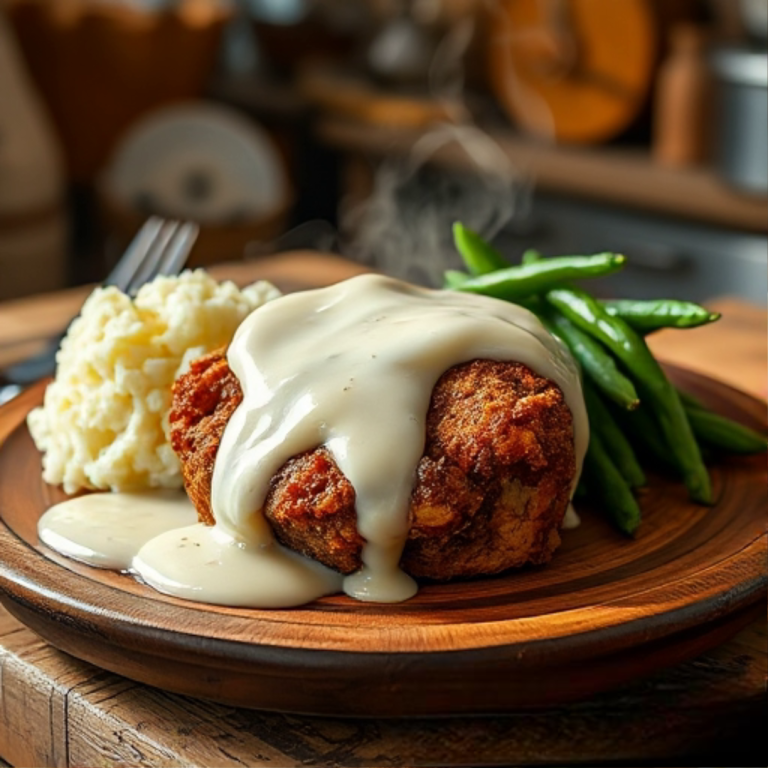How to Smoke Fish | A Complete Step By Step Guide
Smoking fish is a traditional method for keeping and improving the flavor of seafood. Whether you’re a home chef or an aspiring pitmaster, knowing how to smoke fish may introduce you to a world of rich, smokey flavors. In this article, we’ll look at the best ways to smoke fish, including hot and cold smoking techniques, brining, and storage recommendations.
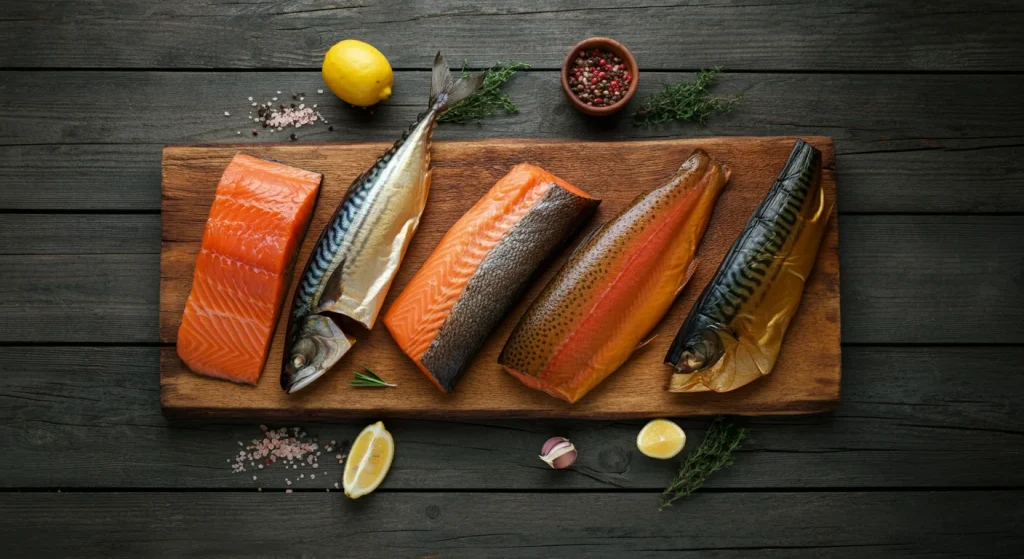
What is Smoked Fish?
Smoked fish is fish that has been cured and exposed to smoke from burning wood, adding a distinct aroma and flavor. There are two primary methods:
- Hot Smoking: Cooks the fish at a higher temperature, making it ready to eat immediately.
- Cold Smoking: Infuses flavor while preserving the raw texture, requiring additional cooking before consumption.
Benefits of Smoking Fish
✔ Enhances taste with deep smoky flavors
✔ Extends shelf life through curing
✔ Adds versatility to dishes like salads, dips, and pasta
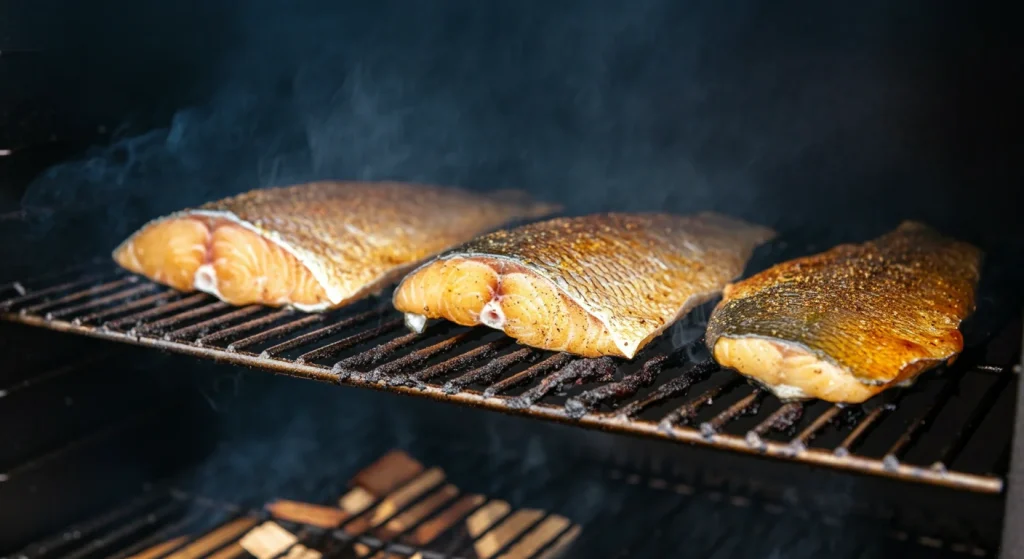
Choosing the Right Fish for Smoking
Are all fish suitable for smoking? Not all fish are suitable for smoking. The best options include:
- Salmon The king of smoked fish! Its rich fat content makes it perfect for both hot and cold smoking.
- Mackerel A budget friendly option with bold flavor and high oil content.
- Trout Mild yet flavorful, and absorbs smoke beautifully.
- Herring Traditional choice for cold smoking, especially in European cuisine.
- Whitefish (Cod, Haddock, Tilapia) Leaner but still works well when properly brined.
Best Wood Choices for Smoking Fish
If you love experimenting with flavors, try using different wood chips when you smoke fish to create unique taste profiles.
| Wood Type | Flavor Profile | Best For |
|---|
| Applewood | Mild, slightly sweet | Salmon, trout |
| Hickory | Strong, smoky | Mackerel, oily fish |
| Alder | Light, slightly sweet | Whitefish, cod |
| Cherry | Mild, fruity | Salmon, seafood |
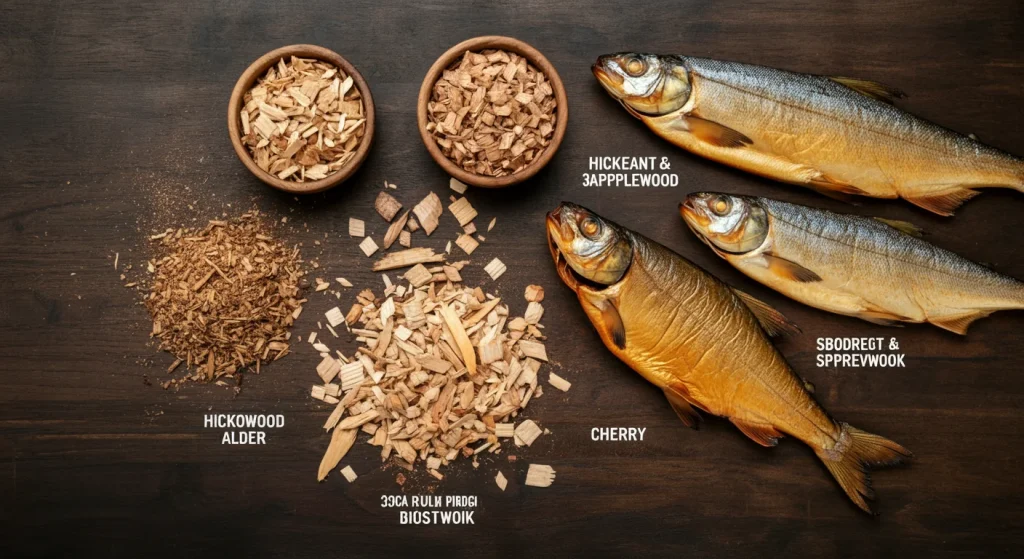
Can You Smoke Frozen Fish?
Yes, but you need to thaw it completely first! Smoking frozen fish directly can lead to uneven cooking and poor smoke absorption, so always defrost it in the fridge before smoking for the best results.
Smoking Methods Hot vs Cold Smoking
Both give great smokey flavor, but one cooks the fish and the other does not. Let’s break it down below:

Hot Smoking
- Cooks the fish at 120°F to 180°F
- Fish is fully cooked and safe to eat
- Commonly used for salmon, trout, and mackerel
Cold Smoking
- Requires a temperature of less than 90°F
- Infuses smoky flavor without cooking the fish
- Commonly used for lox, sashimi-style fish, and gourmet dishes
Whether you hot smoke fish for a quick meal or cold smoke it for delicate flavors, the process is simple with the right steps
If You Love Fish Recipes or Love Sea Food Then you Should Love This Surperise!!
Preparing Fish for Smoking
Some steps you should follow to prepare Fish for smoking:
Cleaning and Filleting the Fish
- Scale and gut the fish Remove the insides and rinse thoroughly.
- Remove pin bones Use tweezers to pull out any small bones.
- Pat dry Ensures the smoke adheres properly for better flavor.
Brining and Curing the Fish
Brining adds moisture and enhances flavor before smoking.
Dry Brining vs Wet Brining
| Dry Brining | Wet Brining |
|---|---|
| Uses a salt and sugar rub | Uses a saltwater solution |
| Produces firmer texture | Adds more moisture |
| Shorter process | Takes longer but more even cure |
Both methods are effective, but dry brining is quicker and produces an even greater texture, which is ideal for fatty fish. Wet brining takes longer but keeps leaner fish moist and evenly cured.
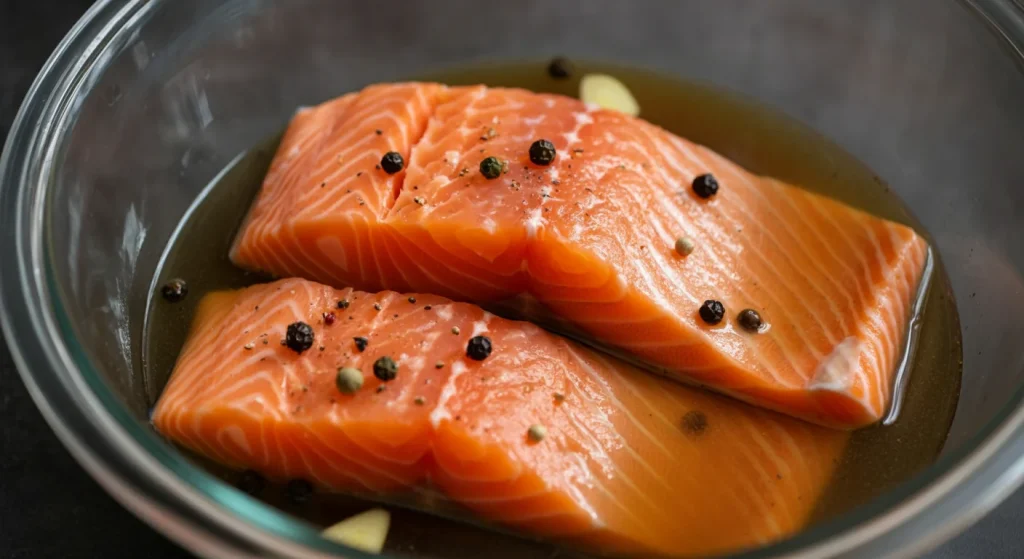
Basic Brine Recipe:
- 4 cups water
- ½ cup kosher salt
- ¼ cup brown sugar
- Optional: Garlic, peppercorns, bay leaves
Let fish brine for 6-12 hours in the refrigerator.
The Smoking Process Step By Step Guide
Follow these steps to smoke you Fish in easy way and get a unique recipe in your kitchen:
Setting Up Your Smoker
Choose from electric, charcoal, pellet, or traditional wood smokers.
- Preheat your smoker to the desired temperature.
- Use hardwood chips like hickory, applewood, or alder for the best flavor.
- Place fish on the rack, skin-side down, allowing airflow.
Controlling Temperature & Smoke Levels
- Hot Smoking: Maintain between 120°F-180°F.
- Cold Smoking: Keep below 90°F with proper ventilation.
How Long to Smoke Fish?
- Salmon: 2-4 hours at 160°F
- Trout: 2-3 hours at 150°F
- Mackerel: 3-4 hours at 175°F
How to Know When It’s Ready
- Flesh turns opaque and flakes easily
- Internal temperature reaches 145°F (hot smoking)
Best Temperature for Smoking Fish
- Cold Smoking: 65°F-85°F (Mostly for preservation)
- Hot Smoking: 120°F-180°F (Ready-to-eat fish)
- Ideal Internal Temperature: 145°F (USDA Recommended)
Tip: Always use a meat thermometer to avoid overcooking!
Storing and Preserving Smoked Fish
Proper storage ensures long-lasting freshness.
- Refrigeration: Store in an airtight container for up to 2 weeks.
- Freezing: Wrap tightly in plastic wrap and freeze for up to 3 months.
- Vacuum Sealing: Extends shelf life to 6 months or more.

Many people smoke fish not only for the incredible taste but also to preserve it for longer periods. To get the best results when you smoke fish, always start with a good brine and the right wood chips.
How to Enjoy Smoked Fish
A great way to enjoy smoked fish is to flake it into salads, spread it on crackers, or mix it into pasta dishes. Smoked fish is incredibly versatile and can be used in countless delicious ways. Here are some of the best ways to serve and enjoy it:
- Charcuterie Board Serve with cheese, crackers, olives, and fruits for a great appetizer.
- Bagels with Cream Cheese A classic! Add smoked salmon, cream cheese, capers, and onions on a toasted bagel.
- Fresh Salads Toss it into a green salad or mix it into a creamy potato salad.
- Pasta Dishes Stir into a creamy pasta sauce or mix with olive oil, garlic, and herbs.
- Smoked Fish Dip Blend it with cream cheese, lemon juice, and herbs for a tasty spread.
- Sushi or Rice Bowls Use it in sushi rolls or serve over rice with avocado and soy sauce.
- Scrambled Eggs Mix into scrambled eggs for a smoky, flavorful breakfast.
Common Mistakes to Avoid When Smoking Fish
These are some mistakes that oftenly our students face during smoking fish, so be careful because we care about you:
🚫 Over-smoking, resulting in bitter flavors
🚫 Skipping the brining process
🚫 Using too much or the wrong type of wood
🚫 Not controlling moisture levels
One of the biggest mistakes when people smoke fish is not drying it properly before placing it in the smoker.
Our Final Thoughts
Learning how to smoke fish at home is a game-changer for seafood lovers who enjoy rich, smoky flavors. Smoking fish is a simple way to add rich, smoky flavor while keeping it fresh. Hot smoking cooks the fish for a quick meal, while cold smoking adds flavor without cooking. Just follow these steps, and you’ll get great results. No matter how you smoke fish, the process is all about patience, technique, and choosing high-quality ingredients.
Now it’s your turn! Smoke Fish, Pick your favorite fish, start the smoker, and enjoy delicious homemade smoked seafood.
FAQs About Smoke Fish
What is the best wood for smoke fish?
Alder, applewood, hickory, and maple are excellent choices.
Do I need to brine fish before smoking?
Yes! Brining enhances moisture retention and adds depth of flavor.
How do I get the best smoky flavor in smoke fish?
Use hardwood chips, control airflow, and maintain a steady temperature.
Can I smoke fish without a smoker?
Yes! Use a stovetop smoker or an oven with a smoke pouch.
Is smoked fish healthy?
Yes! It’s high in omega-3s and protein, but watch out for added sodium.
What types of fish are best suited for smoking?
Oily fish like salmon, mackerel, and trout are ideal for smoking due to their higher fat content, which absorbs smoke flavor well.
How should I store smoked fish, and how long does it last?
Smoked fish should be refrigerated and consumed within a few days. For longer storage, vacuum-sealing and freezing are recommended.
What are the differences between hot smoking and cold smoking fish?
Hot smoking cooks the fish at higher temperatures, resulting in a flaky texture, while cold smoking preserves the fish without cooking, requiring additional curing methods.
Can I use any type of wood for smoking fish?
It’s best to use hardwoods like alder, apple, or hickory. Avoid softwoods like pine, as they contain resins that can impart undesirable flavors.


